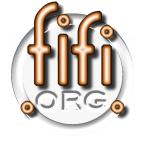GNU Info
 (autoconf.info)Invoking autoscan
(autoconf.info)Invoking autoscan
Using `autoscan' to Create `configure.in' ========================================= The `autoscan' program can help you create a `configure.in' file for a software package. `autoscan' examines source files in the directory tree rooted at a directory given as a command line argument, or the current directory if none is given. It searches the source files for common portability problems and creates a file `configure.scan' which is a preliminary `configure.in' for that package. You should manually examine `configure.scan' before renaming it to `configure.in'; it will probably need some adjustments. Occasionally `autoscan' outputs a macro in the wrong order relative to another macro, so that `autoconf' produces a warning; you need to move such macros manually. Also, if you want the package to use a configuration header file, you must add a call to `AC_CONFIG_HEADER' (Note: Configuration Headers). You might also have to change or add some `#if' directives to your program in order to make it work with Autoconf (Note: Invoking ifnames, for information about a program that can help with that job). `autoscan' uses several data files, which are installed along with the distributed Autoconf macro files, to determine which macros to output when it finds particular symbols in a package's source files. These files all have the same format. Each line consists of a symbol, whitespace, and the Autoconf macro to output if that symbol is encountered. Lines starting with `#' are comments. `autoscan' is only installed if you already have Perl installed. `autoscan' accepts the following options: `--help' Print a summary of the command line options and exit. `--macrodir=DIR' Look for the data files in directory DIR instead of the default installation directory. You can also set the `AC_MACRODIR' environment variable to a directory; this option overrides the environment variable. `--verbose' Print the names of the files it examines and the potentially interesting symbols it finds in them. This output can be voluminous. `--version' Print the version number of Autoconf and exit.
automatically generated by info2www version 1.2.2.9
